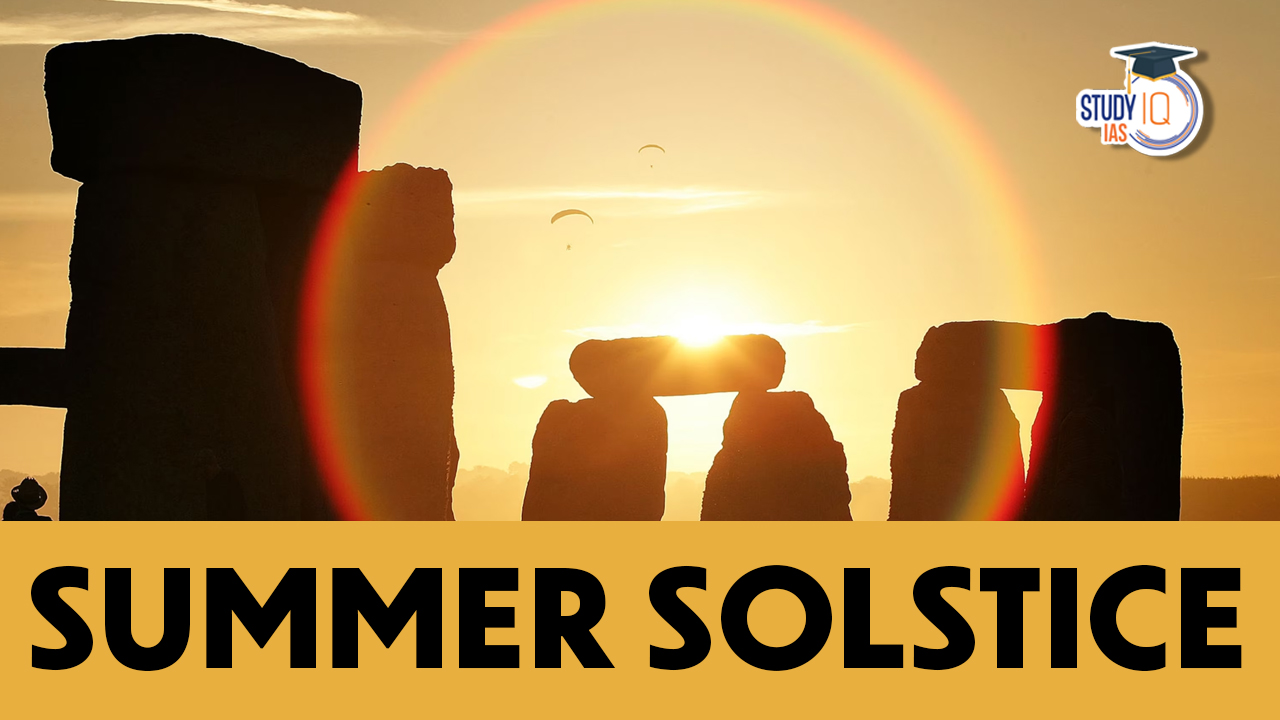Table of Contents
The Summer Solstice 2025, observed on Saturday, June 21, marks the longest day and shortest night of the year in the Northern Hemisphere. It is the moment when the Sun reaches its highest point in the sky at local noon, and the Earth’s axial tilt positions the Northern Hemisphere most directly toward the Sun.
The term “solstice” is derived from the Latin words sol (Sun) and sistere (to stand still), reflecting the point at which the Sun appears to pause in its movement across the sky before reversing direction.
Summer Solstice
The Northern Hemisphere is experiencing its longest day and shortest night of the year. The Northern Hemisphere is closest to the Sun at this time, and the Sun shines directly overhead on the Tropic of Cancer (23.5° North). The Tropics of Cancer and Capricorn, which are north and south of the equator, are located at latitudes of 23.5°. The Arctic and Antarctic Circles are located at 66.5 degrees, respectively. Latitudes are used to calculate how far away from the Equator a location is.
The Earth’s axis, around which the planet rotates once every day, is tilted during the solstice such that the North Pole faces the sun and the South Pole faces away from it. Usually this imaginary axis is slanted at 23.5 degrees with regard to the sun and runs through the centre of the Earth from top to bottom. During the solstice, the sun never sets in the Arctic Circle.
| Summer Solstice | Description |
|---|---|
| Date | June 21 (in 2025) |
| Astronomical Significance | Longest day of the year in the Northern Hemisphere |
| Earth’s Axial Tilt | Earth’s tilt (approximately 23.5 degrees) positions the North Pole closest to the Sun |
| Daylight Hours | Maximum daylight hours for the Northern Hemisphere |
| Cultural Significance | Symbolizes renewal, fertility, and abundance; celebrated across cultures |
| Historical Relevance | Ancient civilizations conducted rituals honoring the Sun’s life-giving energy |
| Modern Observance | Celebrated with festivals, spiritual reflections, and community gatherings |
| Connection to Nature | Highlights humanity’s connection to seasonal changes and natural cycles |
Summer Solstice 2025
Historical Origin
The phenomenon of the Summer Solstice has been recognized and studied for centuries. Around 200 BC, the Greek scholar Eratosthenes experimented on the summer solstice, which significantly advanced our understanding of the Earth’s shape and size. By observing the angles of sunlight in wells and the shadows cast by obelisks in different locations, he was able to estimate the Earth’s circumference with remarkable accuracy and demonstrate that the Earth is spherical.
Scientific Explanation of Summer Solstice
Summer Solstice Geography Behind
The tilt of the Earth is what causes the days to change in length. The Earth’s rotational axis is 23.5° inclined concerning its orbital plane. Any area on the planet experiences varied lengths of days because of differences in the duration of sunshine caused by this tilt and other elements like Earth’s spin and orbit.
The majority of the year, the Northern Hemisphere is tilted towards the Sun, receiving direct sunlight during the lengthy summer days. The days are shorter during the other half of the year when it tilts away from the Sun. The varying seasons on Earth are also a result of the tilt. Seasonal variations are brought about by the Sun’s journey from the northern to the southern hemisphere and vice versa as a result of these phenomena.
Summer Solstice Significance
- Astronomical Significance: Marks the longest day of the year in the Northern Hemisphere.
- Earth’s Axial Tilt: Earth’s tilt positions the Northern Hemisphere closest to the Sun, maximizing daylight hours.
- Cultural Celebration: Symbolizes renewal, fertility, and abundance across various cultures.
- Historical Rituals: Ancient civilizations held ceremonies to honor the Sun’s life-giving energy and agricultural significance.
- Modern Observance: Continues to be celebrated with festivals, spiritual reflections, and community gatherings.
- Connection to Nature: Highlights humanity’s connection to the natural world and the seasonal changes driven by the Sun’s path.


 Story of Meera Bai and Her Devotion For ...
Story of Meera Bai and Her Devotion For ...
 Desert Climate, Distribution, Climatic C...
Desert Climate, Distribution, Climatic C...
 Deserts of India Map, Features of Thar D...
Deserts of India Map, Features of Thar D...





















